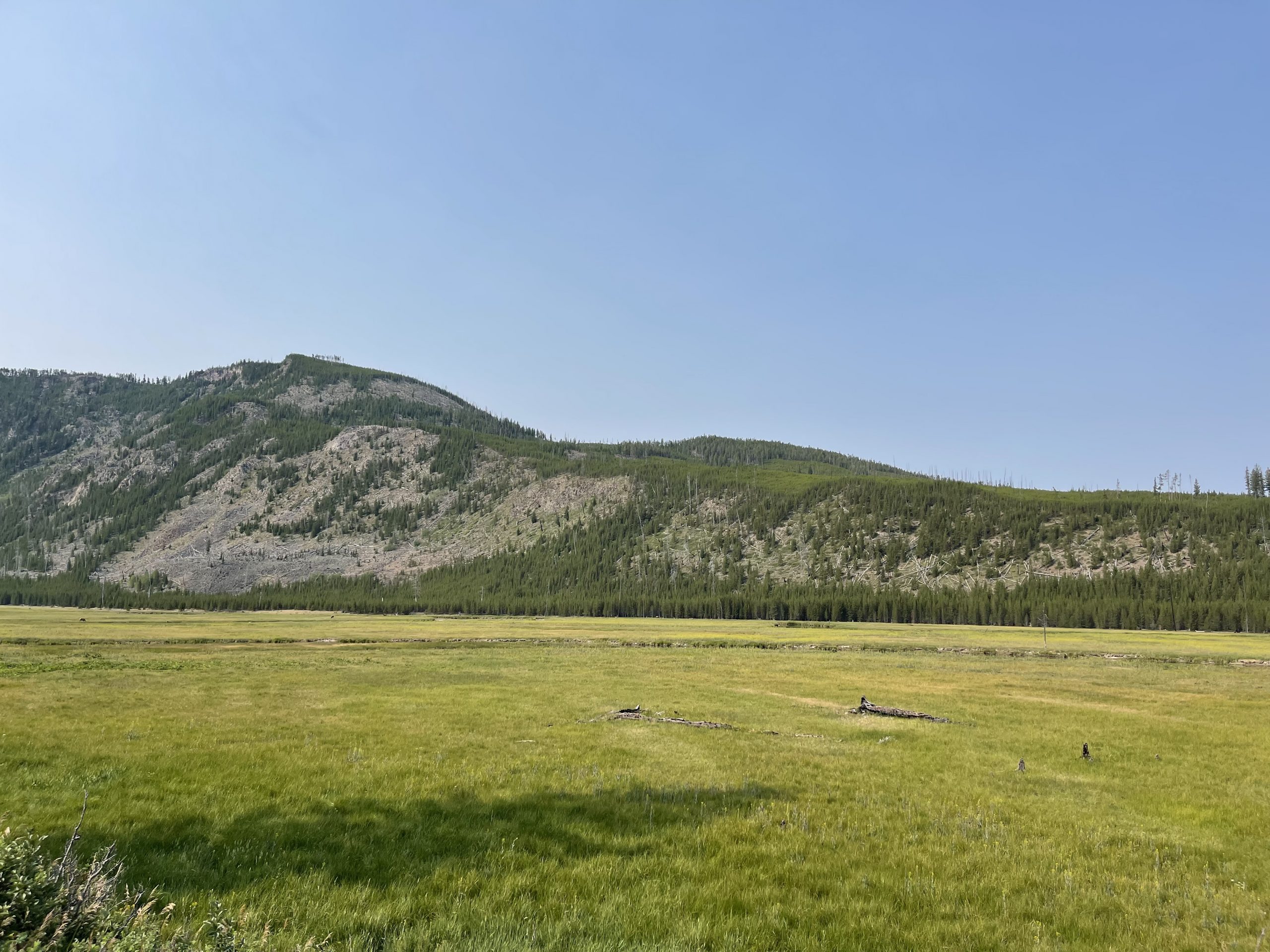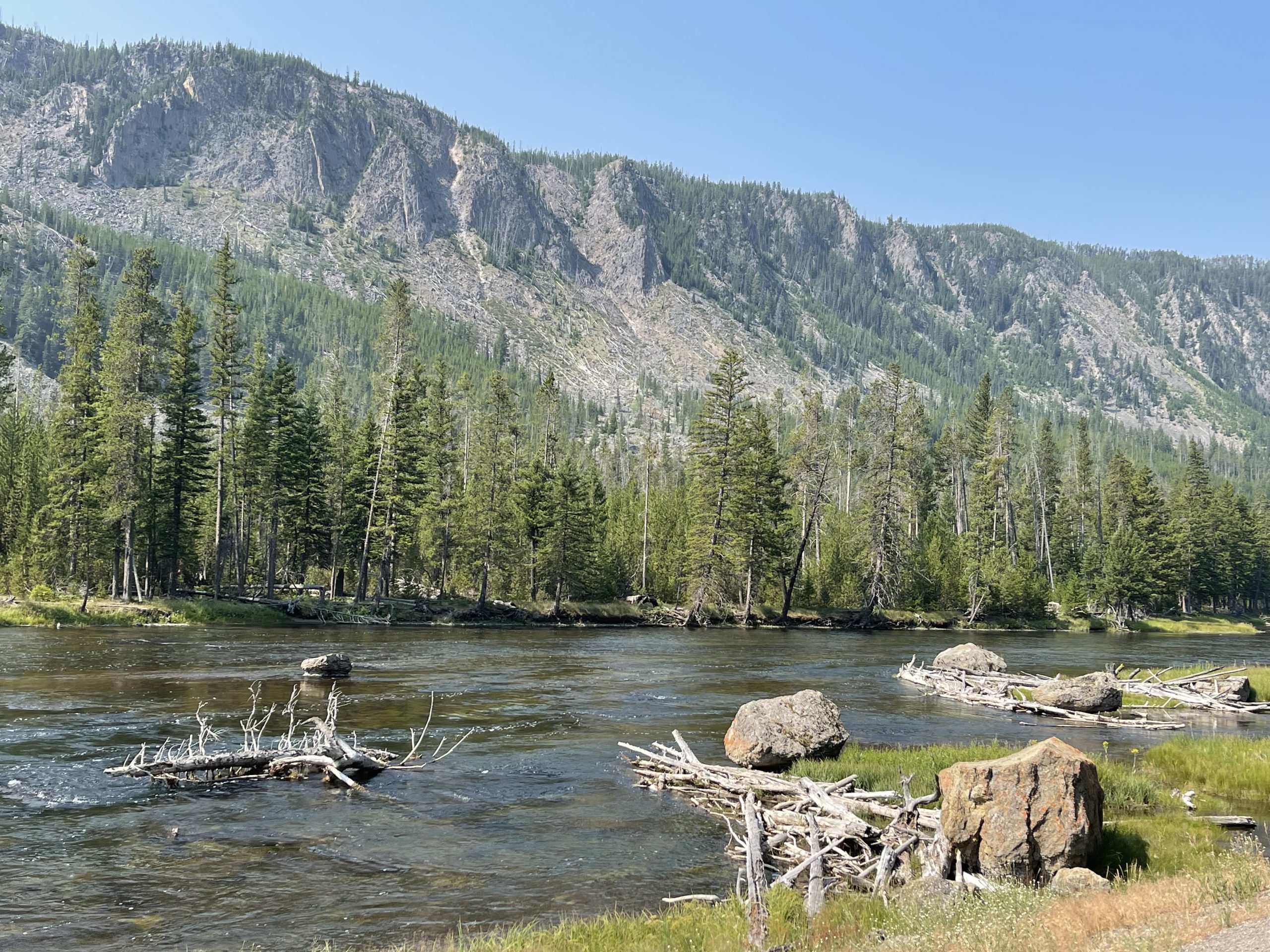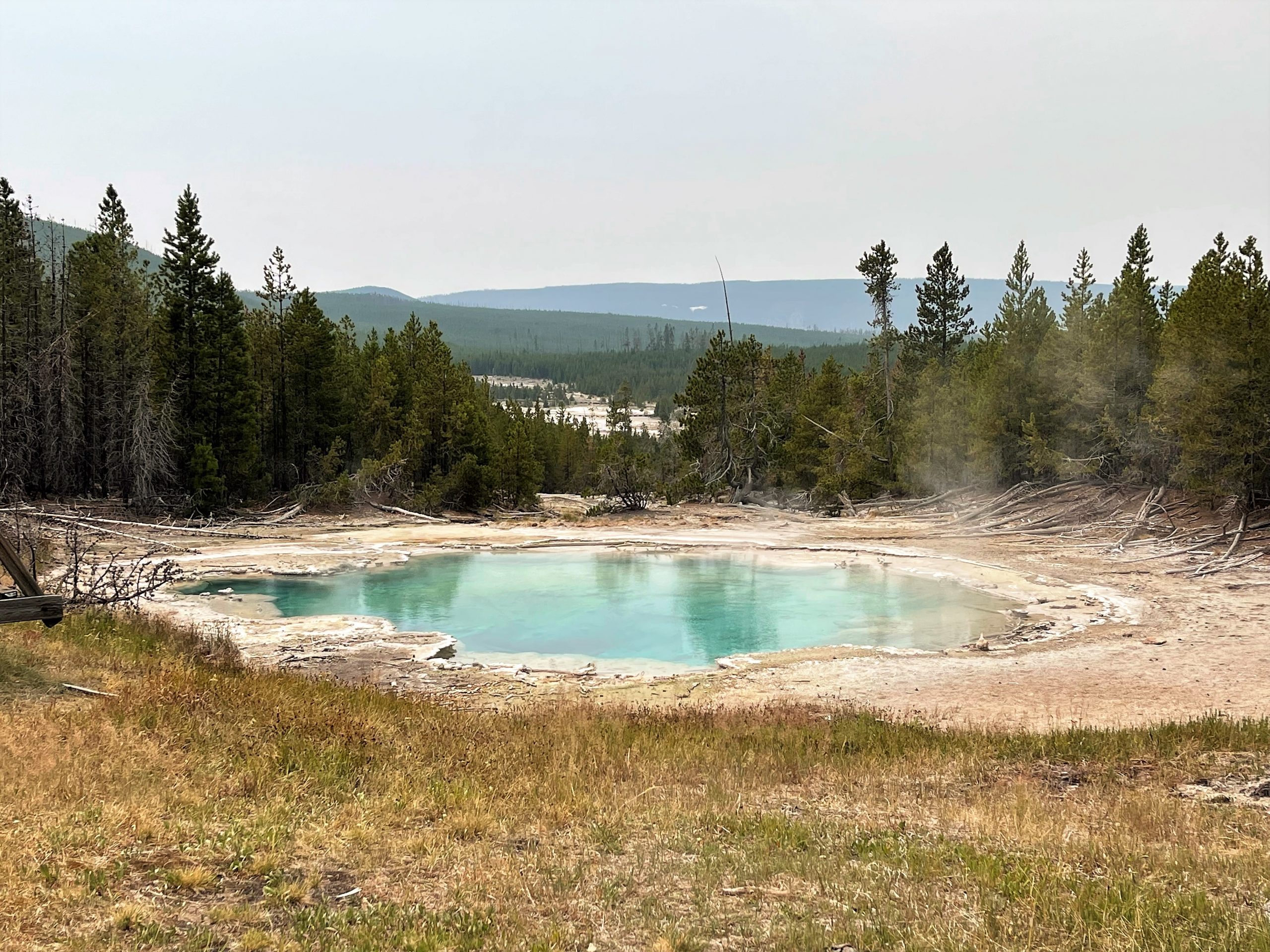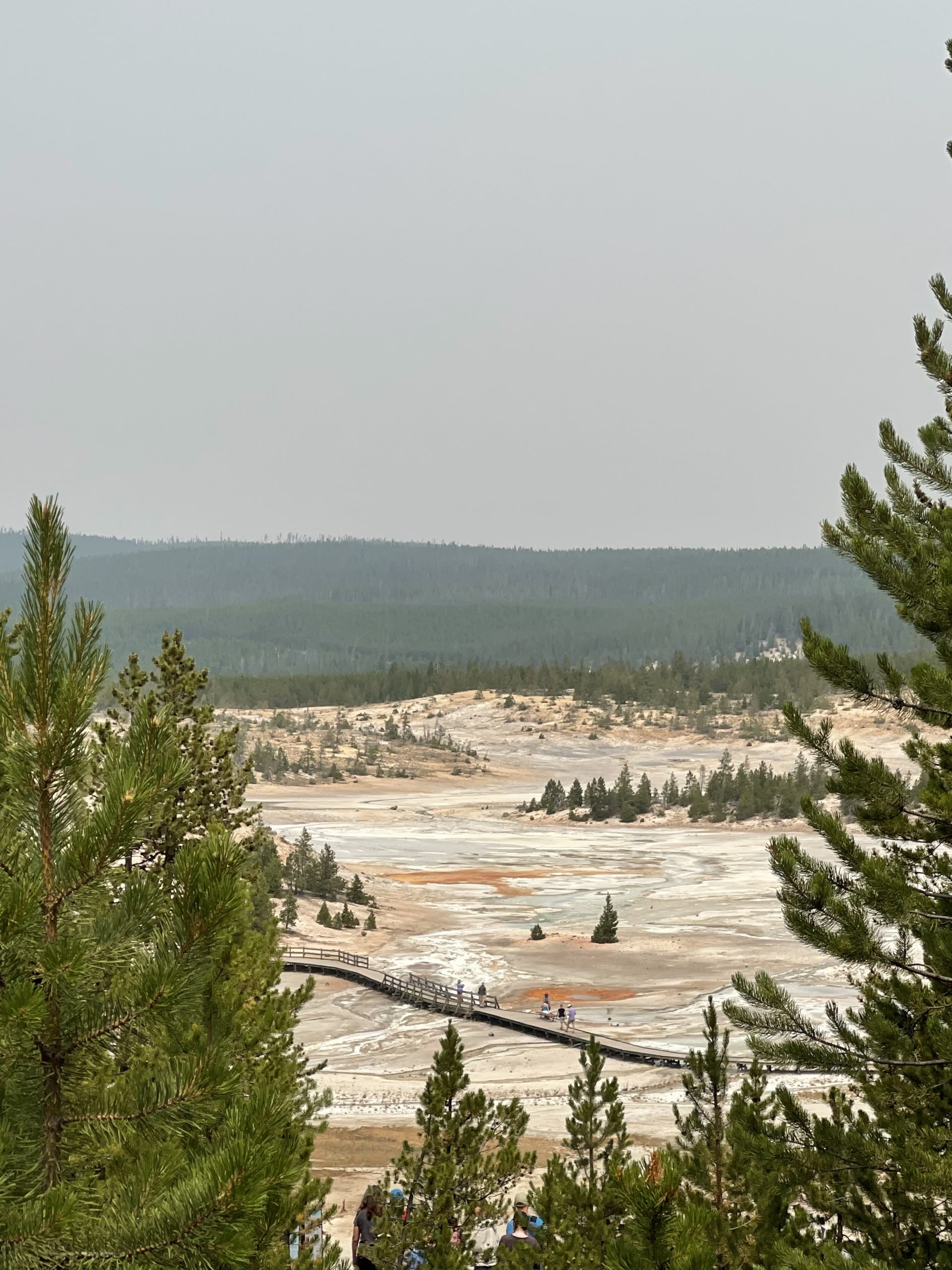Yellowstone. There’s no beginning and there’s no end to this place – at least, we couldn’t find either. Your own personal beginning might be the time and location you enter – something like your first time at Disney World but in awe rather than excitement. You can’t take it all in, so you absorb whatever you can – whenever you can – as you drive and stop and hike and stare and bask.
In awe.
And by the time you leave, you are saddened because you want more of this place, Yellowstone. You have stepped upon only a few of its 2,221,766 acres, have gazed upon only a fraction of its 3,472 square acres, and have spotted only some of the 67 species of mammals or 300 species of birds. You desire more, but you must save it for another time. It’s like a difficult breakup because you’ve established a relationship with this place that you’ll never shed. You’ll take it with you as you go, and it’ll never leave you.
Yellowstone.
(Make sure your audio is on. You’ll find the adjustment at the bottom of this page.)
You’ve read about it – see pics of it. I joined some social media groups that shared information about it. Then you make a plan. Many people have a perfect strategy before arriving.
Ron and I know we are a bit weak on our plan. The night before we enter the park, after we are settled in our campground just ten miles from the West Entrance, we review ideas and brochures. We have allotted three full days in the park and a fourth day to drive through the park, exiting through the East Entrance, planning much of that drive to be in yet a different area than we will see throughout the first three full days. So we plan our days in order of their significance to us, wishing for more, but realizing our time limitations.
We enter the park from the West Entrance each day, but the first day is something like that first day at Disney World, but both exciting and awesome! The traffic slows, and I fumble with my camera. I’ve heard that when the traffic slows, it’s most likely because they’ve seen wildlife. Yes, that is the reason today. This is the first but not the last time a park ranger coaxes us – well actually yells at us – to move on. “Don’t stop in the road,” she hollers to the row of cars in front and behind us. “View the wildlife from the pulloffs.”
But actually the traffic moves slow enough that we have ample time to view the wildlife from the vehicle. Our windows are down every day – all day. Crisp air, purified by greenery and water and rock, permeates my lungs, refreshing my body and invigorating my soul. We gaze, wanting to be one with this nature. A big dark buffalo saunters in the tall bright green grass of the meadow. Elk eat from the plants a bit further back. This is a pasture unlike any I have seen across the Northern Great Plains or anywhere through this land so far. It is an unusual scene for this Michigan girl, for sure!
We seem to flow with the Madison River along this welcoming route, first on our left, then on our right. The first day we view the splendor of this river. The second day we fall in love with it. The third day we adopt it as our own. And the fourth day, as we leave, we pledge to always remember it.
We soon discover that this place belongs to the wildlife and to the plants and the trees and the water and to their Creator. We are merely visitors. But we are welcomed visitors – you and I – if we recognize and accept our place amongst all of this. We are humbled by its magnificence and by its uniqueness and by its beauty. We eagerly accept our place.

The Madison River runs through the pastures like a cutout intended for watering livestock on a farm. Then it widens as it edges the mountain beside it, finally disappearing in the forests beside us, as we turn north onto the Grand Loop. Now the Gibbon River accompanies us. This land is filled with rivers and lakes and waterfalls, and with something quite foreign to us – geothermal features: geysers, steamvents, mudpots, and hot springs. We pull off to view the first hot spring we come by: Beryl Spring. I video – and photograph, soon realizing I wouldn’t have the time or opportunity to video each of the unique elements of the Yellowstone caldera, even if I lived here.

We see the Norris Geyser Basin with its many geysers, springs, and geothermal grounds.
This park is like Michigan’s Upper Peninsula on steroids. Here, as in the U.P., one doesn’t find “Do Not . . .” signs all over the place – only occasionally and when necessary. It’s all original and inviting – in its natural state. We are welcomed here. Roadside Parks are abundant, and we enjoy our picnic lunch up at one of those roadsides, along the Gibbons River.

We follow Norris Canyon Road to the Hayden Valley where we drive slowly, stop, walk, view – and repeat this over and over for hours! Herds of buffalo, valleys as far as the eye can see, mudpots, caldrons – all along the Yellowstone River, from which this National Park was named. We have many close-up opportunities to view buffalo from our truck. We find that the bulls are often loners – near the road – far in the distance – but the cows are always seen in the herds, often with their babies.
Nearing the end of that first day in the park, we visit the location Ron has most anticipated: The Grand Canyon of Yellowstone.
We have developed the habit of praying for one of our immediate family in each beautiful location we’ve visited on this western Adventure. We had started with our son, Matt, who we prayed for on the Going to the Sun Road in Glacier National Park. Today we pray for our grandson Noah as we stand in front of the powerful Upper Falls. The magnitude of its power and beauty is compelling, but when we proceed to the Lower Falls . . .
As I had been in the Redwoods (Click here)., I am again speechless. My eyes well up; I am so appreciative of being able to see this site. Ron stares in wonder. It is all he had thought it might be and so much more: the Grand Canyon of Yellowstone:

First, the River was named by the Minnetaree Indians, who called it Mi tse a-da-zi, or Yellow Rock River in Eastern Montana, but the park then took the name Yellowstone after the yellow sandstones in this canyon. Now we understand.

We literally force ourselves to leave this site to drive back to our campsite, our hearts full of the wonders we’ve seen, but our bodies tired from the day. We look toward tomorrow – another day in Mi tse a-da-zi – Yellowstone.
Click here to read the previous post, “The Trip, Itself,”” leading to Yellowstone.
Discover all posts about our Out West trip in the category at top of page – “Adventure Awaits . . .” Or click here to start with the first post, “The North Begins at Clare.”




















Kathi, If I just had your words for the sights I have seen. My first time at Yellowstone was from the west and we went as far as Old Faithful. Many years later, I was in Jackson Wy. in February. We took a trip on a vehicle with skis on the front. I then got to Old Faithful from the south, I think. I hope you get to Jackson. A very interesting town.
I have enjoyed your trip, as it makes me remember the trip in our motorhome. Jim took care of where we went, me and my two sisters. This was in the early 1990s/
Memories are blessed, aren’t they? I know you are so thankful to have those memories. I’m glad my post renewed those memories for you. Thank you for sharing those with me. I’m writing more about Yellowstone in the next one or two posts, as well. So look for those!